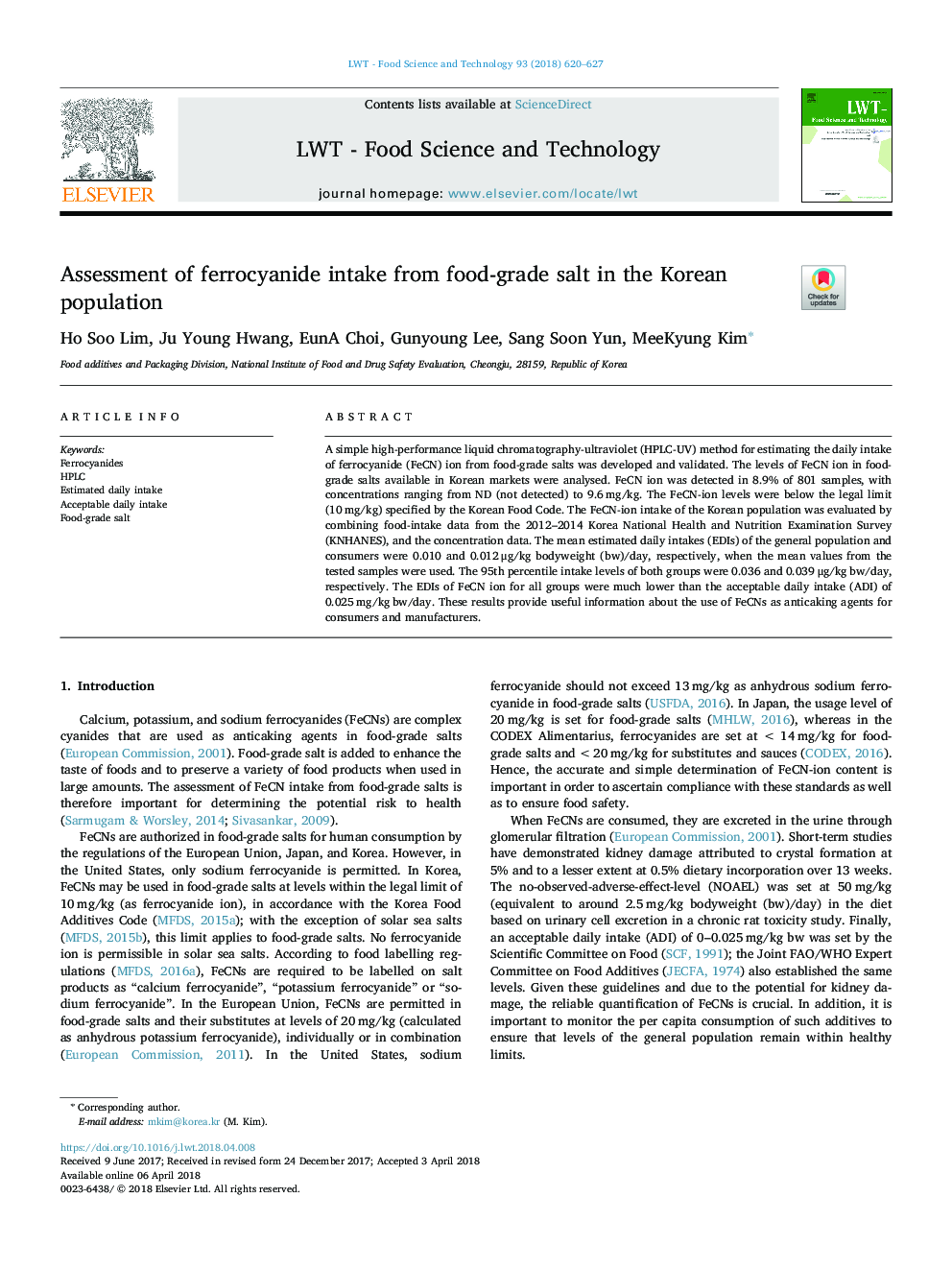| Article ID | Journal | Published Year | Pages | File Type |
|---|---|---|---|---|
| 8891111 | LWT - Food Science and Technology | 2018 | 8 Pages |
Abstract
A simple high-performance liquid chromatography-ultraviolet (HPLC-UV) method for estimating the daily intake of ferrocyanide (FeCN) ion from food-grade salts was developed and validated. The levels of FeCN ion in food-grade salts available in Korean markets were analysed. FeCN ion was detected in 8.9% of 801 samples, with concentrations ranging from ND (not detected) to 9.6â¯mg/kg. The FeCN-ion levels were below the legal limit (10â¯mg/kg) specified by the Korean Food Code. The FeCN-ion intake of the Korean population was evaluated by combining food-intake data from the 2012-2014 Korea National Health and Nutrition Examination Survey (KNHANES), and the concentration data. The mean estimated daily intakes (EDIs) of the general population and consumers were 0.010 and 0.012â¯Î¼g/kg bodyweight (bw)/day, respectively, when the mean values from the tested samples were used. The 95th percentile intake levels of both groups were 0.036 and 0.039â¯Î¼g/kgâ¯bw/day, respectively. The EDIs of FeCN ion for all groups were much lower than the acceptable daily intake (ADI) of 0.025â¯mg/kgâ¯bw/day. These results provide useful information about the use of FeCNs as anticaking agents for consumers and manufacturers.
Related Topics
Life Sciences
Agricultural and Biological Sciences
Food Science
Authors
Ho Soo Lim, Ju Young Hwang, EunA Choi, Gunyoung Lee, Sang Soon Yun, MeeKyung Kim,
